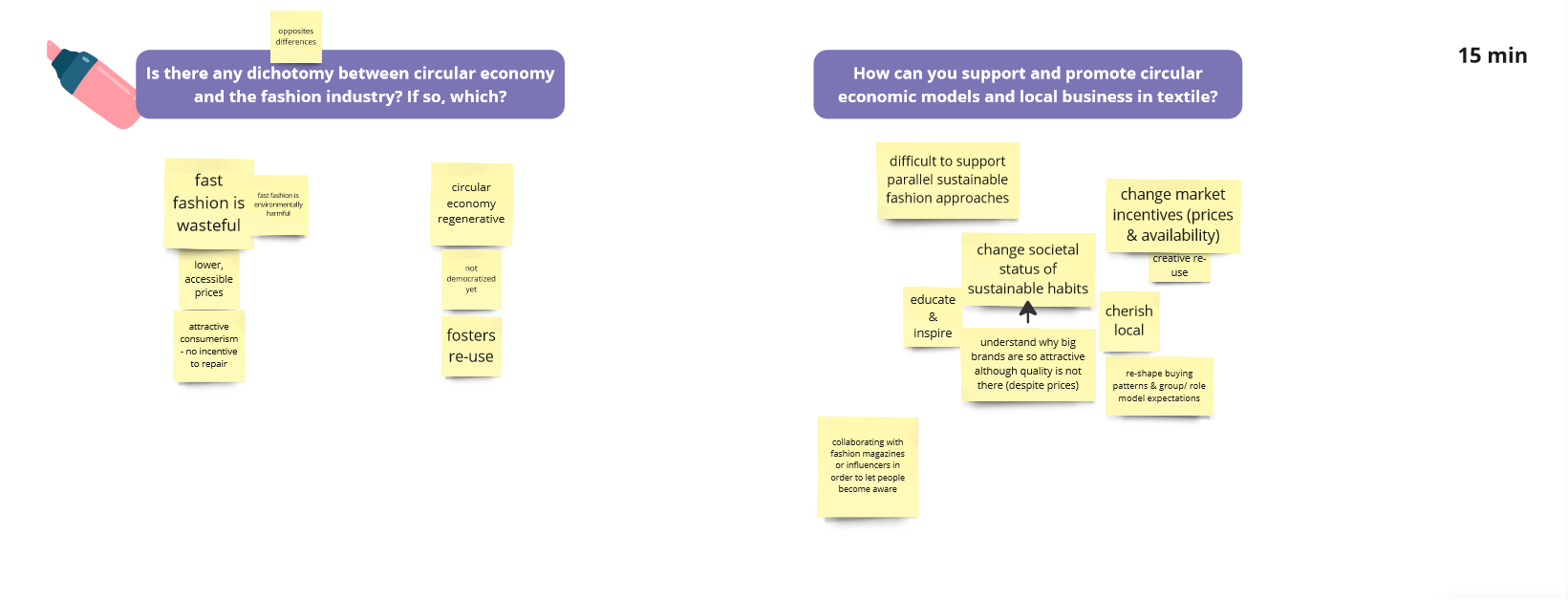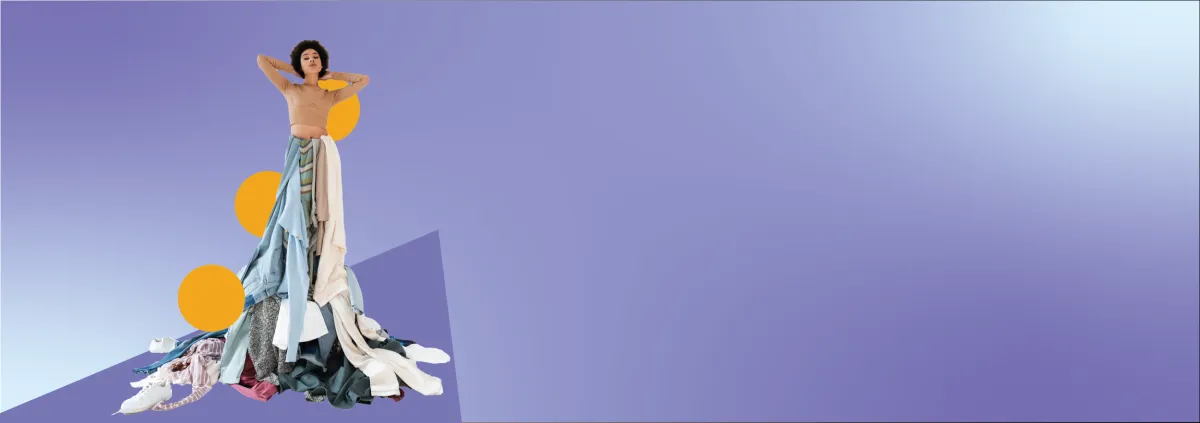Yesterday, the third episode of the Youth Climate LAB on sustainable fashion took place! Besides our usual discussion rounds, we had the opportunity to listen to David Allo, working for Texfor on the European project on this topic with the EISMEA agency.
What was on?
In this meeting, we addressed individual and collective actions to make unsustainable fashion trends more sustainable from the entrepreneurial perspective. As usual, we used the same Miro board to keep track of our ideas and opinions.
In its presentation, our guest explained the project and its work on sustainable fashion. If you are interested, you can download his PPT in the attachments section below. Please check also the study on textile here: https://publications.jrc.ec.europa.eu/repository/handle/JRC106917
What emerged?
We had a challenging (but interesting) discussion on individual and collective actions. Other than legal regulations in favour of sustainable business models and financial incentives, we have highlighted our role as young citizens.
Raising awareness and education are extremely important. Within our network, we can talk about sustainable behaviours in this sector as well as create small projects in which we are directly involved in sustainable activities (such as recycling).

Considering the dichotomy between unsustainable fashion trends and circular economy models, role models, influencers and ambassadors have a key role to play to reach a wider audience. However, it is not only important to mention the impacts of unsustainable tends, but also support more local realities.
By doing this, it will possible to re-share group patterns and shift negative societal status of few circular economy actions towards a positive perception and attitudes.

Finally, we considered the importance to identify green-washing practices, paying attention to fabric quality, presence of chemical smell, durability, and reading clothing labels. Through our behaviours, it is key to lower the demand of such clothes, generally produced through a very complex supply chain.

What was the outcome?
We concluded this session reconsidering previous recommendations and identify our priorities. Although all considerations are important, education is a priority to influence positively fashion trends.

Next steps?
This was our last episode before the summer break. We are going to resume the conversation in September starting to draw conclusion and prepare for the Education for Climate DAY 2023. Stay tuned!


Please log in or sign up to comment.